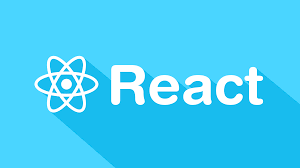An Introduction to Android Accessibility Features
Key Takeaways
- Android offers a range of accessibility features to make apps more user-friendly for those with visual or physical disabilities, but these are often overlooked during the design and implementation phase. Features include adding textual descriptions to UI elements, enabling navigation without using the touchscreen, and creating custom Accessibility Services.
- Implementing accessibility features can be straightforward, with tools like Content Descriptions providing audio hints and visual cues for navigation. Developers can also make their app compatible with various navigation mechanisms like D-pads, trackballs, and gestures through focus navigation.
- Testing is crucial after implementing accessibility features. Developers should ensure all control elements provide necessary feedback, audio prompts are not repetitive, and secondary mechanisms like haptic feedback or visual cues are provided for users with hearing disabilities. Developers can also create their own accessibility services to provide navigational feedback.
Everybody agrees that an app should be easy to use, intuitive and user friendly, but is that enough? We often forget that an important part of app development is making sure your app is accessible and easy to navigate for everyone, even those with visual or physical disabilities.
Android offers a lot of accessibility options and features but they are often neglected during the design and implementation phase. Accessibility APIs were first introduced in Android 1.6 (API level 4) but many developers are not familiar or interested in them. Accessibility has often been an after-thought and if you make a quick search on Google or StackOverflow, there are few mentions.
It shouldn’t be this way, because implementing accessibility features into your app is easy and straightforward, so today we are going to take a look at how.
Adding a textual description to UI elements
Every good designer knows that a well designed interface should be self-explanatory and intuitive without needing instructions. But this is not always the case. Physically impaired users need audio hints and/or visual cues to navigate even the simplest of interfaces and this is where Content Descriptions are utilized.
Content Descriptions are the easiest accessibility feature to implement and one of the most useful. They are like the comments in your code. Google advises using descriptions mainly for ImageView, ImageButton and CheckBox elements as this is where they are most needed.
Descriptions are added in two ways, via XML layout or traditional Java methods.
Using XML you add a description to an image like this (note the last line):
<ImageView
android:id="@+id/new_image"
...
android:contentdescription="@string/image_desc"
/>The @string is declared in the strings.xml file like this:
<string name="image_desc">Simple description of what the image represents</string>For EditText fields use the line below to explain to the user what they should type:
android:hint = "Name Field"If your interface elements change state, like a toggle button or checkbox, you should ensure that the contentDescription changes dynamically depending on the state. In this case use the setContentDescription() method:
label.setContentDescription("Toggle is set to: " + (ToggleButton).isChecked())As mentioned, don’t add a description if not necessary, because you may annoy users. If you feel the element is self explanatory and does not have any real function, for example an app icon, use:
android:contentdescription="@null"Navigation without using the touchscreen
Also known as focus navigation, this allows users to use your app without the need for a touchscreen but using directional controllers. These include D-pads, trackballs, gestures, arrow keys or their eyes on some modern smartphones. It’s important that your app supports these different mechanisms for navigation.
Ensure that every input element is focusable and clickable using directional buttons. Don’t forget to visually indicate the element that the user is focusing on by highlighting it. Every control element in Android has this feature enabled by default, but if you have created your own elements, make them focusable using the setFocusable(true) method or the android:focusable attribute:
<EditText
...
android:focusable = "true"
/>Android has algorithms for finding the nearest focusable element so users can navigate the interface intuitively with the directional controller. If you want to override this feature, use the XML attributes below:
android:nextFocusDown,
android:nextFocusLeft,
android:nextFocusRight,
android:nextFocusUpThese are self-explanatory but the following code sample demonstrates their usage:
<EditText
android:id = "@+id/upper_text_field"
…
...
android:nextFocusDown = "@+id/lower_text_field"
/>
<EditText
android:id = "@+id/lower_text_field"
…
...
android:nextFocusUp = "@+id/upper_text_field
/>Creating your own Accessibility Service
![]()
An accessibility service communicates with a user on behalf of the application and provides navigational feedback like haptic feedback, text to speech and visual cues. Android by default provides services like TalkBack and Explore by touch. These help users who are unable to interact with the device normally because of physical disabilities or in special situations like driving, exercising etc.
You can create your own accessibility services as part of your main application and bundle them together or as a standalone app. For more information on this topic, read the official documentation.
Accessibility testing
Testing is as important as implementation, so make sure to thoroughly test your apps after implementing any accessibility features. This can be done by enabling TalkBack and Explore by touch and trying to navigate your app using only audio feedback and directional controls. Ensure that every control element provides the necessary feedback and that audio prompts are not repetitive and longer than needed. Additionally, the Android Design guidelines suggests that every focusable element should be at least 48dp in length and width.
To support users with hearing disabilities, accompany audio feedback with a secondary mechanism like haptic feedback or visual cues such as pop ups and notifications. If your app provides video playback, offer subtitles or caption support.
Conclusion
We have learned why accessibility should be an important part of your development timeline and how to implement different features into an Android app. Every developer should focus on making their apps accessible by everyone regardless of how they interact with the device.
I want to hear from you. Do you use any of these features in your apps? Do you often test your apps for accessibility? Let me know in the comments below.
Frequently Asked Questions on Android Accessibility Features
How can I enable accessibility features on my Android device?
To enable accessibility features on your Android device, go to Settings > Accessibility. Here, you will find a list of accessibility services that you can turn on or off. These services include features like Select to Speak, TalkBack, Switch Access, and more. You can also adjust settings for captions, display size, and font size to improve visibility.
What is the purpose of the TalkBack feature on Android?
TalkBack is a Google screen reader included on Android devices. It provides spoken feedback so that you can use your device without looking at the screen. This is particularly useful for people with visual impairments.
How can I customize captions on my Android device for better accessibility?
You can customize captions on your Android device by going to Settings > Accessibility > Captions. Here, you can turn on captions and adjust settings like language, text size, and caption style to suit your preferences.
What is the Switch Access feature on Android?
Switch Access is an Android accessibility service that helps users with mobility impairments navigate their devices. It allows you to control your device using a switch or keyboard instead of the touchscreen.
How can I use the Magnification feature on my Android device?
The Magnification feature on Android devices allows you to zoom in and out of your screen for better visibility. To use this feature, go to Settings > Accessibility > Magnification. You can choose to enable Magnify with triple-tap or Magnify with button.
What is the purpose of the Accessibility Menu on Android?
The Accessibility Menu on Android devices provides a large on-screen menu to control functions like volume, brightness, and taking screenshots. This is particularly useful for people with mobility impairments.
How can I use the Color correction feature on my Android device?
The Color correction feature on Android devices is designed to help users with color vision deficiency. You can enable this feature and choose a color correction mode by going to Settings > Accessibility > Color correction.
What is the Sound Amplifier feature on Android?
The Sound Amplifier feature on Android devices enhances audio from your device and reduces background noise for a clearer listening experience. You can use this feature with wired headphones.
How can I use the Live Transcribe feature on my Android device?
Live Transcribe on Android devices provides real-time transcription of speech and sound to text on your screen. This feature is particularly useful for people who are deaf or hard of hearing.
What is the Lookout app on Android?
Lookout by Google is an Android app that uses computer vision to assist people with visual impairments. It can identify text, objects, and people in your environment and provide spoken feedback.
Donald is a Computer Engineering student who is passionate about mobile and web technology. While his focus is in computer networks, he is proficient in C, Java and constantly learning about web development and security.
Published in
·AngularJS·App Development·App Reviews·Mobile·Mobile Web Development·Tools & Libraries·August 20, 2014
Published in
·Design·Design & UX·Performance·Photography & Imagery·Resources·Usability·UX·June 17, 2014



